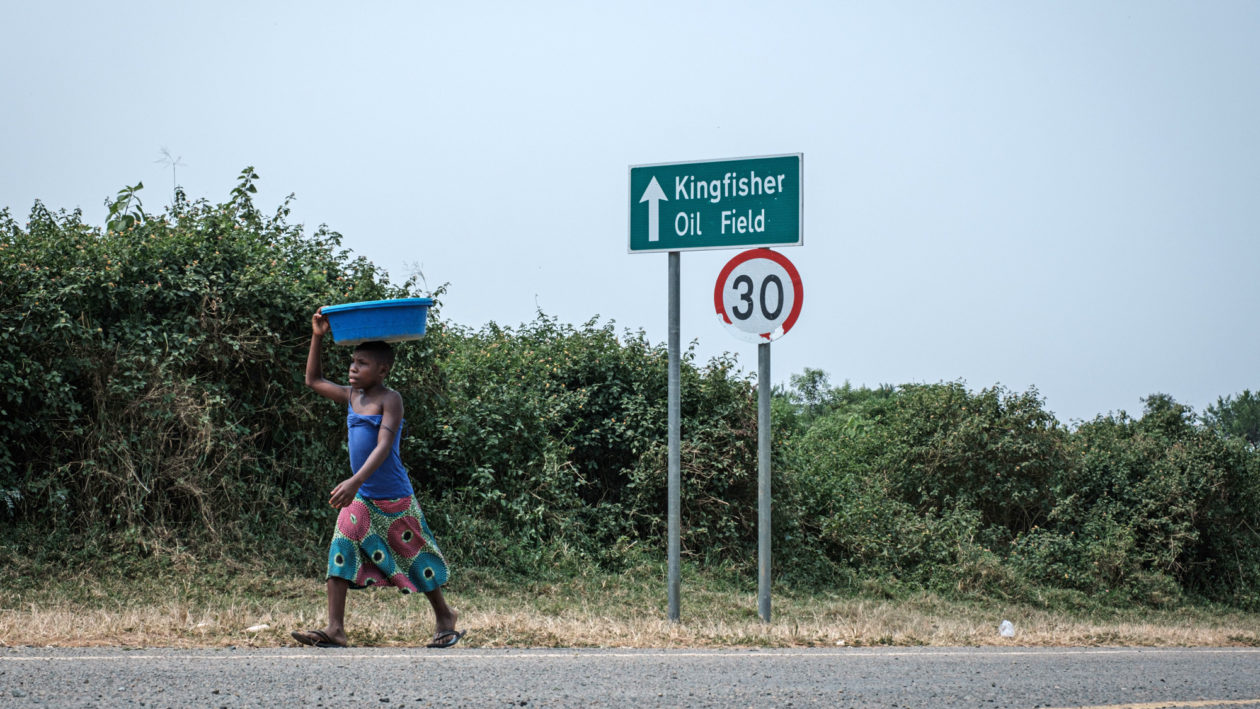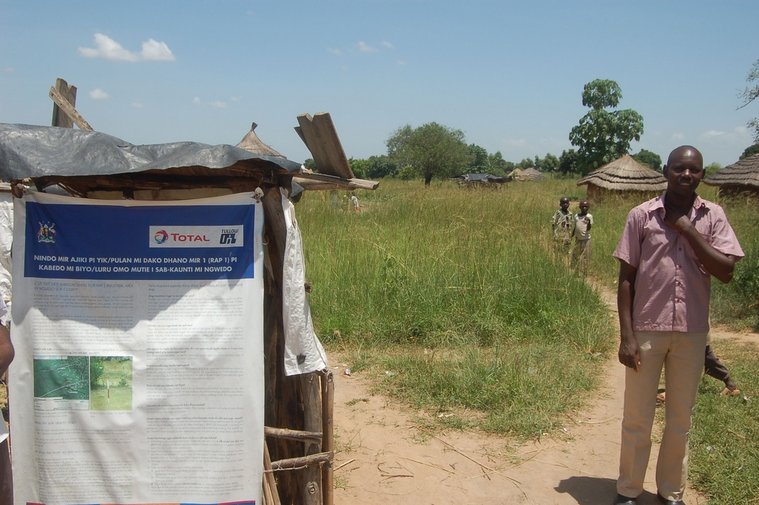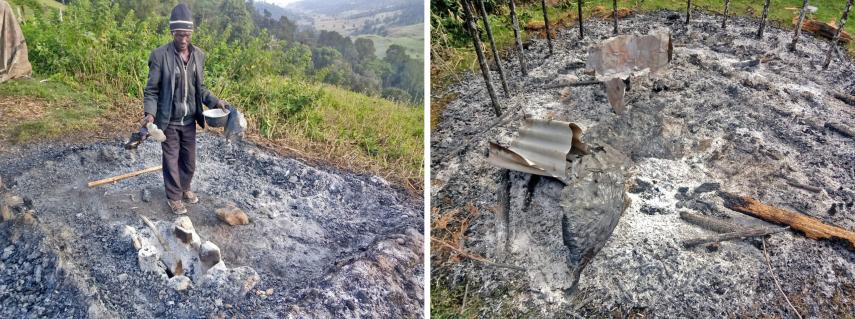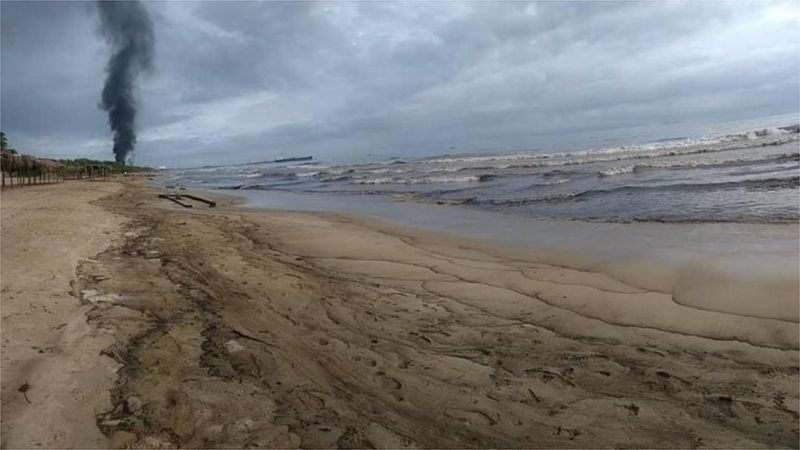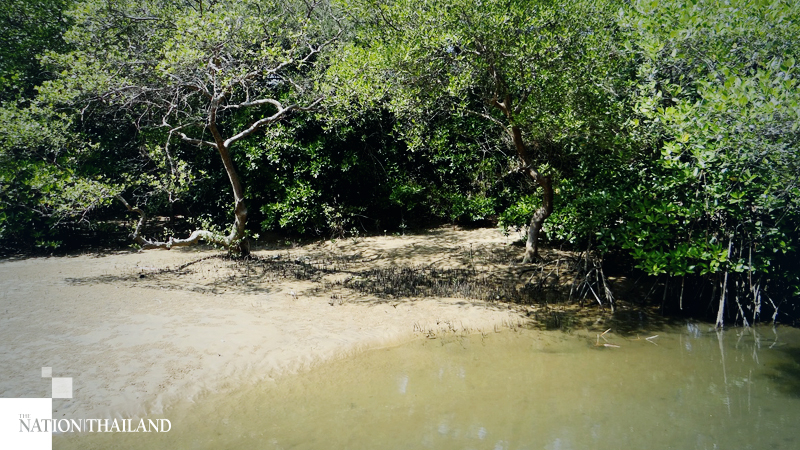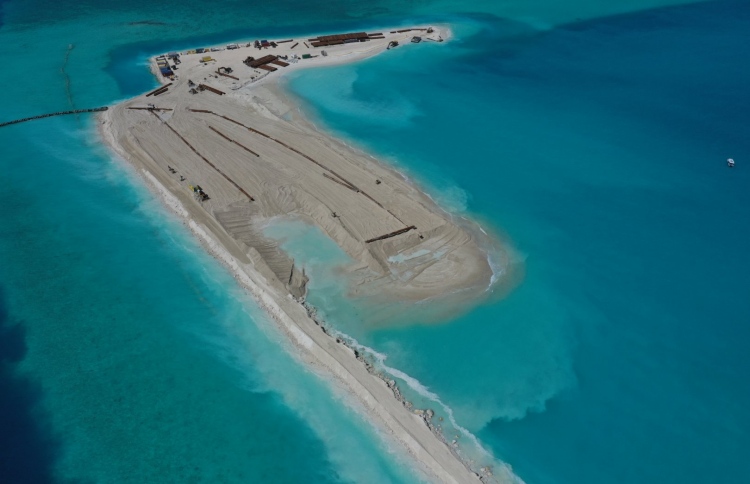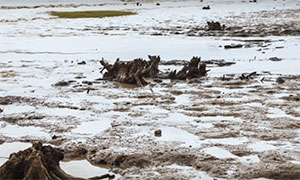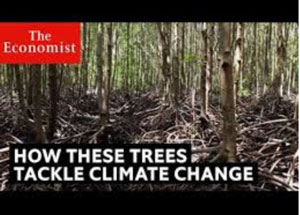|
The MAP News
502nd Edition Aug 29. 2020 |
|
|
FEATURE
Mauritius oil clean-up team turns focus from sea to mangroves |
Stop the destruction of Can Gio Mangrove Biosphere Reserve
|
|
Mangrove Action Project Click here to view past newsletters
|
|
Search News Archive
Saturday, August 29, 2020
MAP News Issue 502 - Aug 29,2020
Saturday, August 15, 2020
MAP NEWS ISSUE 501 - August 15, 2020
|
The MAP News
501st Edition Aug 15, 2020 |
|
|
FEATURE Say no to Vietnam's $9 billion development within mangrove reserve  VIETNAM - A $9.3 billion residential and tourism development has been approved within the buffer zone of the Can Gio Mangrove Biosphere Reserve here in this city of 13 million, Vietnam’s largest urban area. The project was proposed by the Can Gio Tourism Urban Area Joint Stock Company, a subsidiary of Vinhomes, the real estate arm of Vingroup, the country’s largest private company. The Can Gio Tourist City would span 2,870 hectares (7,100 acres), largely on land that would be filled in along the South China Sea coast using sand. The 75,740-hectare (187,200-acre) reserve was established in 2000 and is overseen by a local management board. Home to one of the world’s largest rehabilitated mangrove forests, it protects the area from storm surges while also acting as a “green lung” for a heavily industrialized region. An English-language version of the petition shared with Mongabay says the planned development “poses a serious threat on the Can Gio mangrove forest, which in turn may lead to a series of harm to the urban regions of HCMC, whose population and authority are already facing major environmental challenges such as pollution, floods and land collapses.” READ MORE Stop the destruction of Can Gio Mangrove Biosphere Reserve SIGN PETITION (Scroll down for English version) GLOBAL Years in the making, the Global Mangrove Watch has officially launched! GLOBAL - Global Mangrove Watch is an online platform that provides remote sensing data and tools for monitoring mangroves. It gives universal access to near real-time information on where and what changes there are to mangroves across the world, and highlights why they are valuable. To celebrate the launch of this groundbreaking new tool, we hosted a webinar series with Scripps Institute of Oceanography and Engineers for Exploration, San Diego. Scientists and mangrove project leaders behind the Global Mangrove Watch came together to discuss the science behind the tool, the launch, and plans for the future. We had an incredible turnout of people calling in from almost 50 countries across Aruba to Thailand. READ MORE WORLD MANGROVE DAY PHOTOGRAPHY AWARDS 2020 PHOTO upload GLOBAL - Welcome to our 6th World Mangrove Day! Once again as a celebration of World Mangrove Day we are harnessing the power of photography to raise awareness of mangrove forests and we are proud to share these amazing photos with you! This incredible collection of images celebrates the work of all our mangrove photographers. Our 2020 contest has been our most exciting yet, with entries from all over the world showing the true beauty and importance of mangrove ecosystems. Come and view our biggest mangrove online exhibition ever. We were inspired this year by the bold commitments being made across the world for a sustainable future and with our four brand new categories we hope to inspire action for Nature. Our categories highlight mangrove wildlife, communities, conservation, and the threats that mangrove forests are facing. By putting the spotlight on these areas, we aim to show the importance of mangroves and why we so vitally need to preserve and restore them. We hope you enjoy viewing the images as much as we enjoyed receiving them. We cannot thank you enough, for an incredible World Mangrove Day! READ MORE AFRICA Mauritius oil spill: Fears vessel may 'break in two' as cracks appear  MAURITIUS - The MV Wakashio, believed to have been carrying 4,000 tonnes of fuel oil, ran aground on a coral reef off the Indian Ocean island on 25 July. Despite bad weather, Prime Minister Pravind Jugnauth said 500 tonnes had been safely pumped out on Monday. But he warned the country was preparing for the "worst-case scenario". Mauritius is home to world-renowned coral reefs, and tourism is a crucial part of its economy. Since the weekend, volunteers have been collecting straw from fields and filling sacks to make barriers against the oil. Others have made their own tubes with tights and hair to add to the effort, and some have been cleaning up the island's beaches. Their actions went against an order from the government asking people to leave the clean-up to local authorities. READ MORE Restoring mangroves in west Africa a challenge, but UNEP shows the way  WEST AFRICA - The mangrove ecosystem in the Western Indian Ocean (WIO) comprising 10 African nations is rapidly getting depleted; some areas have reportedly lost as much as 88 per cent of the cover, according to the United Nations Environment Programme (UNEP). Conserving and restoring mangroves is essential and a nature-based solution is required to address adverse environmental, societal and climatic challenges in the region, according to the new UNEP guidelines on mangrove ecosystem restoration for the WIO region. West Africa accounts for 31 per cent of the mangrove cover in the continent. The UNEP status report stated that the ecosystem was under threat due to the increasing population, coastal development and poor governance. Climate change poses a risk to the remaining mangrove areas, mainly through rising sea levels and increased sedimentation caused by precipitation and shoreline change. In fact, the future of mangroves is uncertain especially in the region, according to another report. READ MORE NIGERIA: Restoring mangrove forests in the Niger Delta 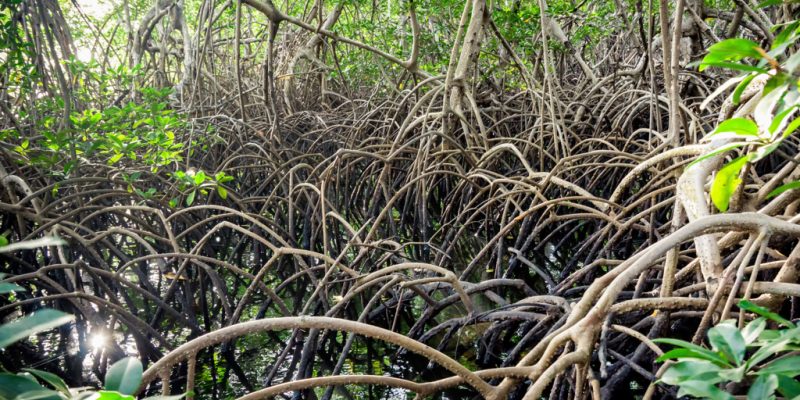 “Mangrove For Live Project” is the name of the initiative, which aims to restore degraded mangrove forests and maintain those that are still in good condition in Nigeria. The project will soon be launched in this West African country. The first phase will focus on mangrove forests in the Niger Delta in southern Nigeria. The announcement was made on July 26, 2020 by Nigeria’s Minister of State for the Environment Sharon Ikeazor, on the occasion of the commemoration of the International Day for the Conservation of the Mangrove Ecosystem. The project is being implemented by Wetlands Africa, a subsidiary of Wetlands International, an organization dedicated to wetland conservation and restoration; and the Regional Partnership for Coastal and Marine Conservation (PRCM), a coalition of stakeholders working on West African coastal issues covering seven countries. According to Minister Sharon Ikeazor, Nigeria has the largest coverage of mangroves in Africa, and the fourth largest in the world. She added that more than 60% of these mangroves, equivalent to 6,000 km2, are in the Niger Delta region. The first phase of the Mangrove For Live Project will help promote the health of the mangrove ecosystem in the Niger Delta. It will also enable the people of this region to develop more sustainable livelihoods. READ MORE Nature By The Numbers  UGANDA - When Cyclone Amphan came barreling up the Bay of Bengal this past May, South Asia’s first named storm of the year appeared to pose a massive threat to the people who live on the coastal floodplains and to the animals and plants – including many endangered species – that rely on these sensitive ecosystems. But nature came to the region’s rescue. The Sundarbans, the world’s largest mangrove forest, offered better protection than any man-made storm wall could have done. When Amphan’s 16-foot storm surge slammed into this 4,000-square-mile national park, the mangroves took the teeth out of it, just as they did with the two other supercharged cyclones, Aila and Sidr, that have made landfall in recent times. On the other side of the world, natural storm defenses on the lower end of Manhattan have long since been paved over. Real-estate developers have even extended the island into New York Harbor with acres of landfill, neglecting to build up storm surge protections. As a result, when Hurricane Irene and Superstorm Sandy hammered the city in 2011 and 2012, respectively, lower Manhattan, including the city’s financial district, was inundated. READ MORE AMERICAS Environmental groups recognise World Mangrove Day  CAYMAN ISLANDS - To commemorate World Mangrove Day (26 July), multiple environmental organisations came together to launch an awareness campaign, culminating in an educational kayak event last Saturday around the Safehaven area. More than 50 interested residents attended the event organised by the Mangrove Rangers, Ambassadors of the Environment, Mangrove Education Project, and Cayman Mangrove Conservation. In the week following World Mangrove Day, a series of educational features highlighted the true value of this ecosystem. These included the brand new Mangrove Rangers website (mangroverangers.ky), social media posts, thought-provoking videos, and content related to the Mangrove Species Conservation Law. The new Mangrove Rangers in training will be announced at the end of the month and will begin operations in September. READ MORE WATCH: Cayman's mangroves, our hidden heroes  Mangroves, our hidden heroes. The powerhouse of our fishing industry, and guard against powerful storms. With that being said, it should be of great concern that the Cayman Islands' mangrove population has declined by 70 per cent since the 1970s. This is an alarming figure, given how vital they are to our local ecosystems and overall environment. It is crucial for us as a society, to uphold a higher standard towards how we operate around our mangroves. Ignorance is no excuse for thoughtless behavior. These are our islands which we are hurting. We must take ownership of our actions and progress with a more conscious mindset. WATCH VIDEO ASIA Call to step up mangrove conservation efforts  ASEAN - The world’s most productive and intricate web of life can be found in mangroves, which provide critical breeding habitats for about 75 per cent of fish species caught in the oceans. Apart from supporting the world’s food systems, mangroves are the planet’s protectors against the catastrophic consequences of climate change. They can store carbon 10 times as much as the terrestrial ecosystems and the specialised root systems make them natural buffer zones in coastal areas. They minimise the impacts of strong ocean waves and winds, and help reduce erosion and siltation that impact livelihoods of coastal communities. The ASEAN region is fortunate to be hosting 42 per cent of mangrove forests in the world, according to the most recent ASEAN Environment Report. But in the last four decades, the ASEAN has seen the rapid decline of this precious resource. From an estimated regional total mangrove area of 63,850 square kilometres in 1980, it has declined by 33 per cent in a span of 40 years to 42,914 square kilometres in 2020, according to the Food and Agriculture Organization Global Forest Resources Assessment. Part of the solutions to our modern-day concerns like food security, climate change, and public health are in the conservation of mangrove forests. READ MORE |
Stop the destruction of Can Gio Mangrove Biosphere Reserve
|
|
Mangrove Action Project Click here to view past newsletters
|
|
-
The community of adults and youth in Cayman Islands has come together recently to release a series of educational videos. Each is geared to...
-
By Alfredo Quarto, Program & Policy Director Co-founder, MAP There is a rather urgent situation concerning the bio-invasion of the Son...
-
By: Isabel Robinson, MAP Volunteer Intern Some months ago I decided to come to Thailand and do an internship in mangrove conservation, ...
MAP News Issue #596 = April 20, 2024
ENTRIES NOW OPEN! Mangrove Photography Awards 2024 10 Years Celebrating Mangroves GLOBAL - MAP has launched our 10th Mangrove Photograp...




